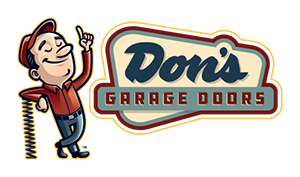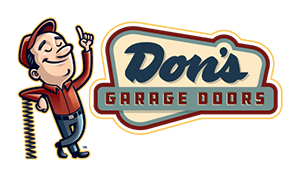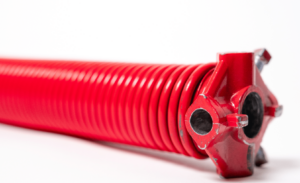 A broken garage door spring can quickly turn a routine day into a major hassle. When your springs snap, your door may get stuck, slam shut, or refuse to budge, putting your family’s safety and your home’s security at risk. At Don’s Garage Doors, we specialize in reliable garage door spring repair and replacement services using premium MaxLife springs that are built to last.
A broken garage door spring can quickly turn a routine day into a major hassle. When your springs snap, your door may get stuck, slam shut, or refuse to budge, putting your family’s safety and your home’s security at risk. At Don’s Garage Doors, we specialize in reliable garage door spring repair and replacement services using premium MaxLife springs that are built to last.
Garage Door Springs – A Key Element in a Working Garage Door
Garage door springs are crucial component of a garage door system. It is a tightly wound coil or spring-like mechanism typically located above the garage door or on its sides. Garage door springs play a vital role in the operation of the door by counterbalancing its weight.
People often think it is the garage door opener that lifts the door, when in fact, the springs do most of the heavy lifting. Without springs, garage door openers are basically useless. Garage doors weigh hundreds of pounds and the springs are responsible for lifting them. If your garage door is not opening, before calling for garage door opener repair, chances are your spring has snapped.
If you think you have a broken garage door spring needing repair, call our service number 833-886-5219 and we will have a trained technician out the same day to get that door open and working again. At Don’s Garage Doors, we use only the strongest replacement garage door springs on the market in our repairs.
Most garage doors have two springs, and when one spring breaks, is safe to assume that the other is ready to go too. As a safety precaution, and to prevent future inconvenience, we typically recommend replacing both garage door springs as quickly as possible.
Expert Garage Door Spring Repair & Replacement Near You
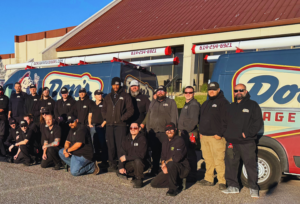 Do you depend on your garage door to work properly every day? You’re not alone. Many people use their garage doors more frequently than their home’s front door on a day-to-day basis. As the primary means of entering and exiting your house, your garage door can be raised and lowered multiple times each day. Even though it’s one of the most frequently used entries to your home, it’s not something you think about often. Unless it doesn’t work.
Do you depend on your garage door to work properly every day? You’re not alone. Many people use their garage doors more frequently than their home’s front door on a day-to-day basis. As the primary means of entering and exiting your house, your garage door can be raised and lowered multiple times each day. Even though it’s one of the most frequently used entries to your home, it’s not something you think about often. Unless it doesn’t work.
What happens when you get ready to head out for the day and you discover you can’t open your garage door? You’re running late for work or school and your car is stuck. What now? You probably have a broken garage door spring.
Fix Broken Garage Door Springs Fast
A broken spring can cause serious damage to your entire garage door system if left unchecked. When the tension fails, the door may crash unexpectedly, damage your opener, or throw off your cables and tracks.
Our trained technicians replace broken garage door springs safely and restore proper balance so your door opens and closes smoothly. Whether your garage door spring snapped unexpectedly or has been showing signs of wear, we’re ready to help with friendly, efficient service.
You’ll get:
- Protection from crashing, off-balance doors
- Extended life for your opener and rollers
- Restored home security and ease of use
- Peace of mind with professional repairs using high-quality parts
Get a LIFETIME Warranty With MaxLife Torsion Springs
Standard springs only last about 10,000-20,000 cycles, but MaxLife springs are engineered for 80,000+ cycles. These heavy-duty torsion springs are built for long-term performance and come with a lifetime warranty when installed by Don’s. That’s real value and real peace of mind – every time you hit the garage door button.
Signs You Need Garage Door Spring Replacement or Repair
Keep an eye out for these common signs that you might need a repair or new garage door springs:
- A visible gap in the coil indicates the spring is broken
- A bend at the top of the garage door panel
- Difficulty opening or closing the door manually
- A loud “pop” or crashing noise when the door moves
- Jerky or uneven motion while raising or lowering the door
If you notice one or more of these, it’s time to schedule garage door spring repair service. Ignoring the signs can lead to more serious (and more expensive) issues later on. Call us to replace garage door springs with premium parts that restore both safety and function.
Our technicians also inspect for damaged torsion springs during every tune-up, helping you avoid surprise breakdowns and promoting garage door spring safety year-round.
What Happens When Garage Door Springs Break?
When garage door springs break, it can lead to a variety of problems and potentially dangerous situations. Here are some of the common consequences and issues that can occur when garage door springs break:
- You May Hear a Loud Noise: Most of the time, even when the door doesn’t fall down, a loud crashing sound occurs when springs break. Even if you don’t see any parts or pieces of your springs on the ground, you should take a closer look at your garage door. A sudden unwinding spring may have caused the sound you heard.
- Door Becomes Heavy: When a garage door spring breaks, the door becomes extremely heavy because there is no longer a counterbalancing force. Attempting to lift or lower the door manually can be very difficult or even impossible, posing a safety risk.
- Door Won’t Open: In most cases, when a garage door spring breaks, the door will not open using the automatic opener. You may hear the opener motor running, but the door won’t move because it’s too heavy without the assistance of the springs. If you suspect you need an opener replacement, there are many different types of garage door openers to choose from.
- Door Closes Rapidly: If a garage door spring breaks while the door is in the open position, it can suddenly close rapidly and unexpectedly, which is incredibly dangerous to anyone or anything in its path.
- Noisy Operation: A broken spring can cause loud and unusual noises when attempting to open or close the garage door. These noises may indicate a problem with the springs.
- Uneven Door Movement: When one spring breaks and the other remains intact (if your door has two springs), the door may become unbalanced. This can result in one side of the door moving faster than the other, causing potential damage to the door and its tracks.
- You See a Gap in the Spring: This is one of the easiest ways to identify spring damage. Springs are supposed to be connected from end to end and they should also be tightly wound. If you see a gap in your spring, it is likely damaged and will need replacement.
- You See Loose Cables: When a garage door spring breaks, it often leads to more problems. Most of the time, broken springs loosen cables. If you look at the ceiling and notice hanging slack cables, you want to take a closer look at your springs.
Common Causes of Broken Garage Door Springs
Garage door springs carry a heavy workload – literally. They lift and lower the full weight of your door every time it moves, so it’s no surprise they wear down over time. Here’s what usually causes spring failure:
- Daily wear and tear – Standard springs are rated for around 10,000 cycles, which is just 3–5 years for most homeowners.
- Rust and corrosion – Rust weakens the coils and makes springs more likely to snap.
- Lack of maintenance – Neglecting regular spring maintenance, without lubrication and inspections, issues go unnoticed until they cause failure.
- Imbalanced door system – If your door isn’t balanced properly, the added strain can reduce spring life significantly.
You Get What You Pay For
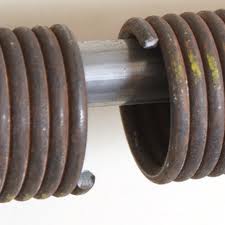
It might be tempting to go with your cheapest option for broken garage door spring repair or replacement, but it’s better to make a smart investment in a quality product and with a trusted service provider. At Don’s Garage Doors, we install premium springs that are stronger, more durable, and built to perform better than standard products. Our customers get long-term value and peace of mind because safety and reliability should never be a gamble.
Types of Garage Door Springs
There are two different types of garage door springs that look just like regular springs, torsion and extension. They are metal coils used to raise a garage door. However, the key distinction between the two is how they work. Whichever type of spring you have, they are an essential part of the safe and efficient operation of any garage door.
The two main types of garage door springs are:
Torsion Springs
Torison springs are the most common springs in modern garage doors. Mounted above the door, they twist to lift and lower the door with consistent pressure and balance. We offer high-performance garage door coil spring replacement options like MaxLife torsion springs, designed for smooth, quiet, and long-lasting operation.
Extension Springs
Extension springs are typically found in older garage door systems, these stretch and contract along each side of the door. They’re more prone to wear and require safety cables to prevent snapping. Many homeowners choose to upgrade to torsion springs for better safety and durability.
What Do I Do if My Garage Door Springs Break?
Given the potential dangers associated with broken garage door springs, it’s critical to take immediate action when you suspect a spring has failed. Here’s what you should do:
- Do Not Attempt Repairs: Garage door springs are under high tension and can be dangerous to work on without the proper training and equipment. It’s best to leave spring repairs to experienced professionals.
- Disable the Opener: If you suspect a spring has broken, disconnect the garage door opener to prevent any attempt to operate the door automatically, potentially causing further damage.
- Contact a Garage Door Repair Professional: Reach out to a qualified garage door technician to inspect the springs and perform any necessary repairs or replacements. They have the expertise and tools to safely address the issue.
When garage door springs break, it can lead to a range of problems, including difficulty in opening the door, potential safety hazards, and the risk of further damage to the door system. Promptly seeking professional assistance is essential to address the issue safely and efficiently.
Fast Same-Day Garage Door Spring Repair Near You
Don’t attempt to repair broken garage door springs on your own, Don’s is here to help! Our experienced garage spring repair technicians are ready to get your door back in working order quickly and safely so you can get back to your everyday life. Whether you need spring repair, rollers fixed, or garage door weather stripping repair near you, contact Don’s Garage Doors today, and we’ll come to the rescue!
How Much Does it Cost to Repair Garage Door Springs?
A common question that our operators receive over the phone is “How much will a broken garage door spring cost to repair?” The answer is that it depends on several factors – the size of your garage door, garage door weight, and the type of springs being used on your garage door. Garage door spring replacement cost depends on whether it’s a full replacement or a minor adjustment. Expect a range of $500–$1,500 for most repairs. We’ll walk you through your options clearly.
Need Emergency Spring Repair Near You? Call Us!
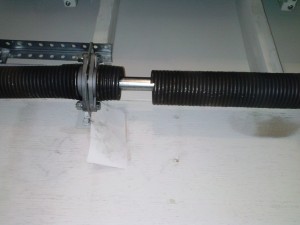
A broken spring can leave your garage door stuck open or shut, creating a real security concern, especially after hours. That’s why Don’s Garage Doors offers 24/7 emergency garage door repair service. We’ll be there fast to restore safety, access, and peace of mind. Searching for “broken garage door spring repair near me” or “garage spring repair near me”? We’re your local, dependable solution.
Schedule Expert Residential Garage Door Spring Repair or Replacement Today!
Whether your spring has already broken or you’re just seeing early warning signs, don’t wait. With honest pricing, premium parts, and trained, in-house technicians – not subcontractors – you’ll always get the top-rated residential garage door spring repair or replacement service Don’s Garage Doors is known for.
Garage Door Spring Repair & Replacement FAQs
Here are some quick answers to the most common questions homeowners ask about garage door springs.
My garage door won’t open, what do I do?
You have a broken or damaged garage door spring. What do you do? If your garage door springs are damaged or broken, your garage door will not open, and you will need to replace the broken spring (or springs) to get it working again.
Your garage door spring can break at any time, and many people think replacing it is something you can do yourself. But BEWARE – unless you know what you are doing, and have the proper tools, replacing a broken garage door spring can be very dangerous – it can cause loss of limbs or worse. We always recommend contacting a professional garage door company to ensure the repair is done safely and correctly.
How much does garage door spring replacement cost?
The price can vary based on spring type, door size, and labor, but garage door spring replacements range between $500 – $1,500. We always provide clear, upfront estimates before starting any work that include all parts and labor. Keep in mind that most garage doors have two springs. Usually, you’ll have to replace them both at the same time.
How long do garage door springs last?
Standard springs typically last 5–7 years (about 10,000 cycles). Our MaxLife springs last far longer – up to 80,000 cycles – providing better long-term value and reliability.
How often should garage door springs be replaced?
Wondering how long until your garage door springs should be replaced? The lifespan and how often garage door springs should be replaced can vary depending on:
- the quality of the springs,
- how often the garage door is used, and
- how well they the garage door springs are maintained
While the most common reason garage doors springs break is general wear and tear. Factors such as spring quality, climate, frequency of use, maintenance, sizing, and balancing can affect the duration of your garage door springs’ lifespan.
It’s important to remember that garage door springs are under a significant amount of tension, and when they break, they can pose major safety risks. It’s advisable to have broken or worn-out garage door springs replaced by a professional garage door technician. Additionally, many garage door manufacturers provide warranties on their springs, so it’s a good idea to check if your springs are still under warranty if they need replacement. Regular inspection and maintenance can also help detect and address issues with garage door springs before they lead to a complete failure. Learn more on how to fix a noisy garage door spring with the help of the expert technicians at Don’s Garage Doors.
How can I make my garage door springs last longer?
If you want to make your garage door springs last longer, regular maintenance is key. Have your door system inspected once a year, keep springs lubricated, and call for service if you notice strange sounds or unbalanced movement.
Can I fix a broken garage door spring myself?
We don’t recommend it. Garage door springs are under high tension and can cause serious injury if handled improperly. It’s safer and more cost-effective to leave it to trained pros.
Does Don’s Garage Doors fix industrial door springs?
Yes. We service residential and light commercial garage doors. If you’re not sure whether your door qualifies, give us a call and we’ll provide a recommendation.
How do I choose the best broken garage door spring repair near me?
If you’ve been searching online for “garage door spring replacement near me” or “garage door torsion spring repair near me,” you already know there are many options – how do you pick the right one? Look for a provider with licensed technicians, local experience, strong customer reviews, and clear warranties. Don’s Garage Doors checks every box, with friendly service you can trust.
Why did my garage door springs break?
Have you ever experienced the frustration of arriving home after a tiring day at work only to find out that your garage door isn’t functional? You may be scratching your head because the spring is broken; it is important to know why this happens so that you can avoid similar accidents in the future. Here’s how a Garage Door Springs:
- Wear and Tear: Like any moving parts, they have a limited lifespan typically measured in cycles (one cycle is a full open and close of the door). When correctly installed, these springs endure around 10,000 cycles, comprising both opening and closing actions. Over time, the constant stress of lifting and lowering the door can cause the spring to weaken and eventually break.
- Rust and Corrosion: Rust and corrosion can weaken the metal of the spring, making it more susceptible to breakage. This is especially common in areas with high humidity or where road salt is used during the winter months.
- Poor Maintenance: Neglecting regular maintenance, such as lubricating the springs and other moving parts, can accelerate wear and tear on the springs. Proper maintenance can prolong the lifespan of your garage door springs.
- Imbalanced Garage Door: If your garage door is not properly balanced, it can put extra strain on the garage door springs. An imbalanced door might be heavier on one side, causing one of the springs to wear out faster.
- Temperature Changes: Extreme temperature fluctuations can affect the performance of garage door springs. Cold weather can make the metal more brittle, increasing the risk of breakage.
- Incorrect Spring Size: Using the wrong size or type of spring for your specific garage door can lead to premature failure. It’s essential to install the appropriate springs that are suited for the weight and size of your door.
- DIY Repairs: Attempting to adjust or repair garage door springs without the necessary knowledge and tools can lead to improper spring size use, improper installation, damage, and breakage. It’s best to leave spring repairs and replacements to trained professionals.
- Sudden Impact or Overloading: Impact from a vehicle or an object hitting the door can cause spring damage. Additionally, trying to manually lift the door when the springs are under tension or using the door opener during a spring malfunction can overload the springs and cause them to break.
To prevent garage door spring breakage, it’s essential to schedule regular garage door maintenance, ensure proper balancing of the door, and consider replacing springs when they reach the end of their expected lifespan. If your garage door springs do break, it’s advisable to seek professional assistance for safe and proper replacement. Attempting to replace garage door springs without the necessary expertise and safety precautions can be extremely hazardous.
